2025. 1. 5. 00:00ㆍArt/Acrylic P. Abstract
비루함 마저 익숙해진 나 자신을 심판대 위에 세워야 한다.
결국 또 파고드는 그 약점앞에 누구나 고개숙일 수 밖에 없다.
그러나 그런 자신을 인정해야 한다.
철저히 부서지고 녹슬고 인에 박혀버린 추함앞에 정직해야 한다.
치졸하게 변명하고 끈임없이 남탓하며 악취나는 죄성을 그만 발현하라!
니 죄를 니가 알렸다!
참회해야 한다. 회개해야 한다.
그래야 인간이다.
I have to stand before the judgement seat for myself,
who has become accustomed to even meanness.
In the end, everyone has no choice but to bow their heads
before that weakness that digs in again.
However, I have to acknowledge that about myself.
I have to be honest before the ugliness
that has been thoroughly broken, rusted, and ingrained in me.
Stop making petty excuses, blaming others,
and expressing your stinking sinfulness!
You have made your sin known!
You have to repent. Must repent.
Only then can you be human.
Penance / 참회
100*80.1*2.5 F40
Mixed media on canvas
Mediums; acrylics, medeling paste, dried large anchovy
https://jonathank.tistory.com
https://www.singulart.com/en/artworks/kim-jun-sung-penance-2233355
In crafting this piece, I embraced the essence of time and nature's relentless force. Using acrylics and plaster, blended organically, I sought to channel a metaphysical presence that transcends the classical bounds of art. The abstract, layered textures and aged hues evoke a sense of enduring wisdom and impermanence. This artwork explores the ephemeral beauty of existence, capturing a moment that is both a whisper and a testament to the ages. Its presence in a space brings a profound, thought provoking ambiance that encourages introspection and connection to the deeper, often overlooked narratives of life.
이 작품을 만들 때, 나는 시간의 본질과 자연의 끊임없는 힘을 받아들였다. 유기적으로 혼합된 아크릴과 석고를 사용하여, 나는 예술의 고전적인 경계를 초월하는 형이상학적 존재를 전달하려고 노력했다. 추상적이고 겹겹이 쌓인 질감과 오래된 색조는 지속적인 지혜와 무상함을 불러일으킨다. 이 작품은 존재의 덧없는 아름다움을 탐구하며, 속삭임이자 시대에 대한 증거인 순간을 포착합니다. 공간에 있는 그것의 존재는 깊이 있고 종종 간과되는 삶의 이야기에 대한 자기 성찰과 연결을 장려하는 심오하고 생각을 자극하는 분위기를 가져온다.


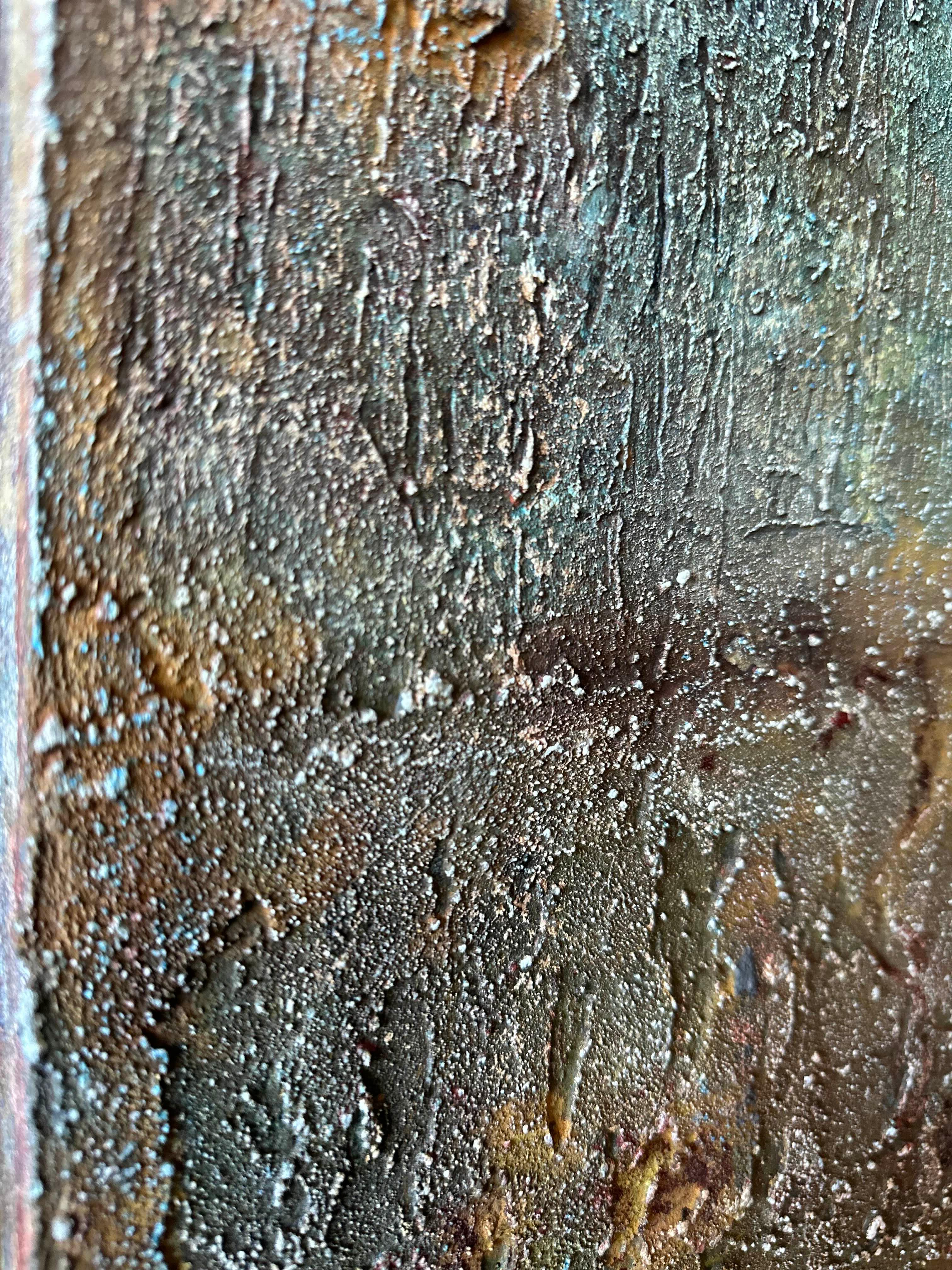










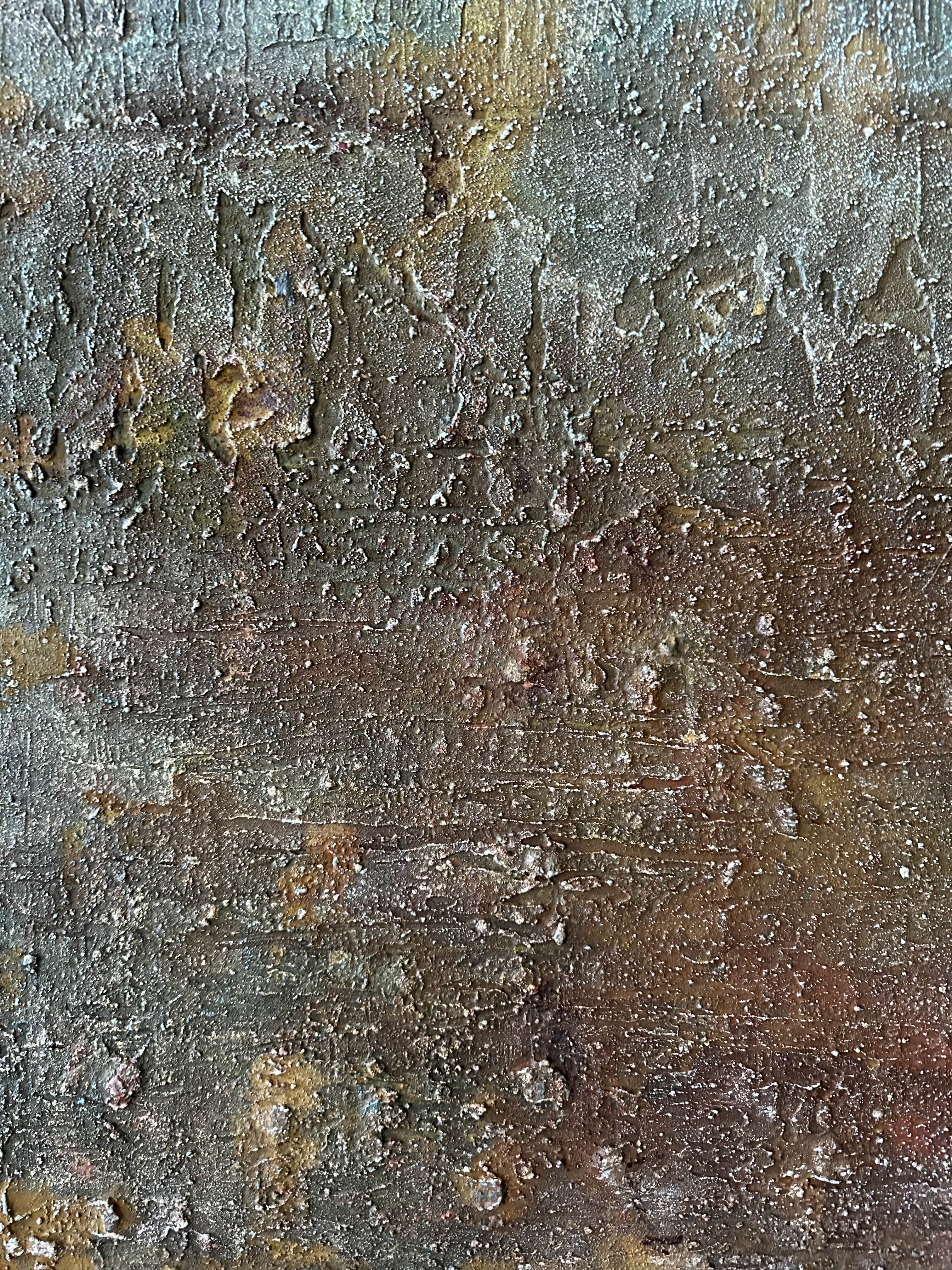

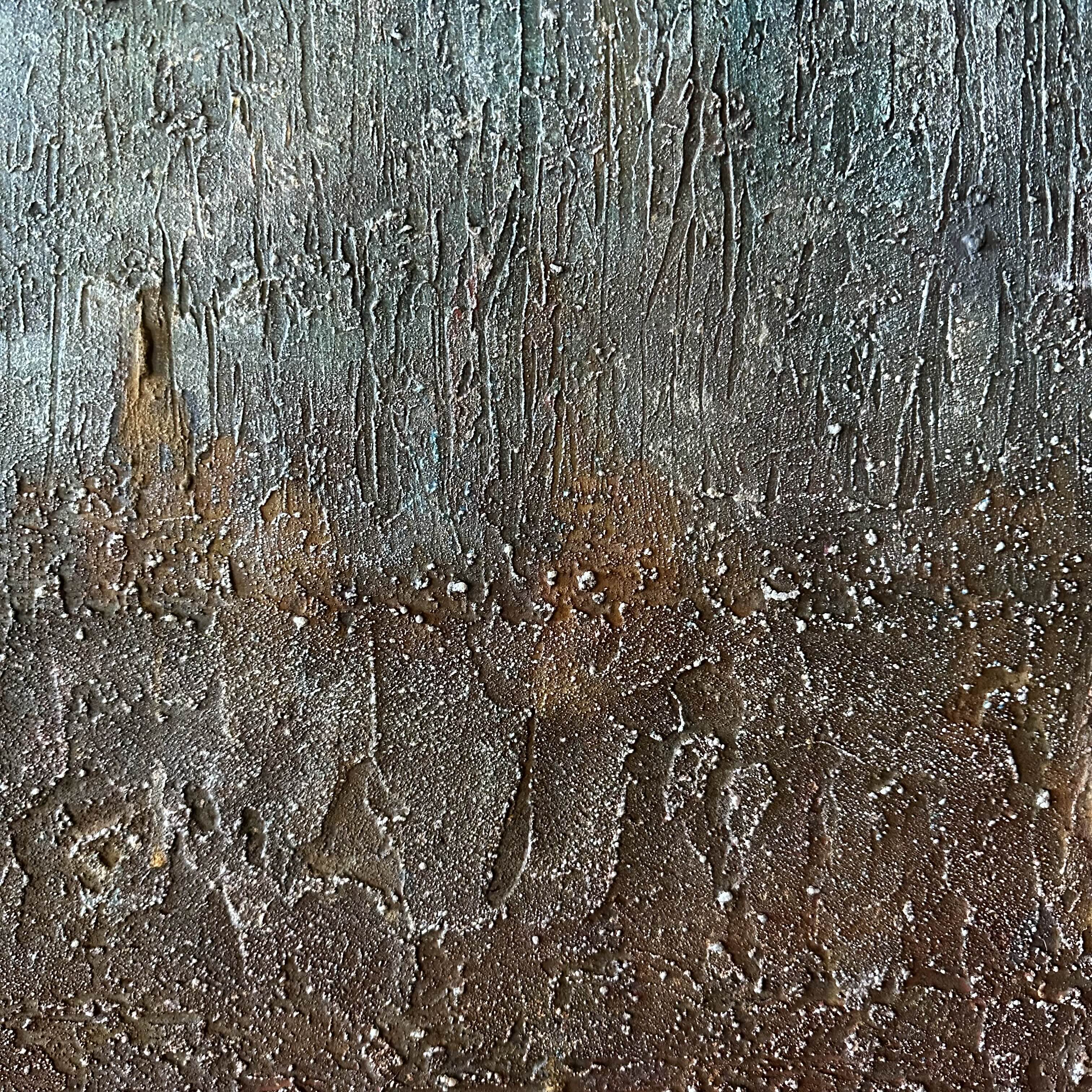



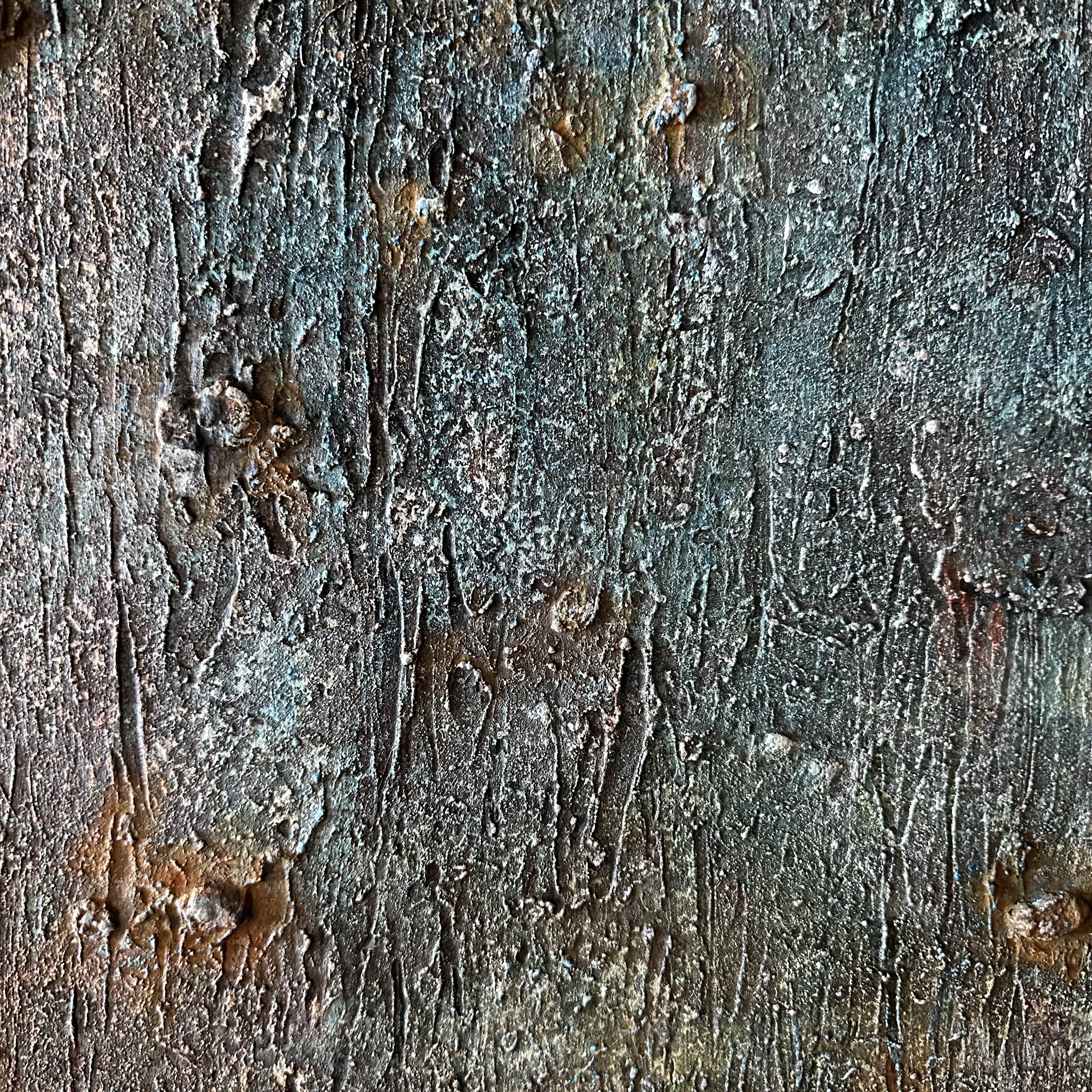


















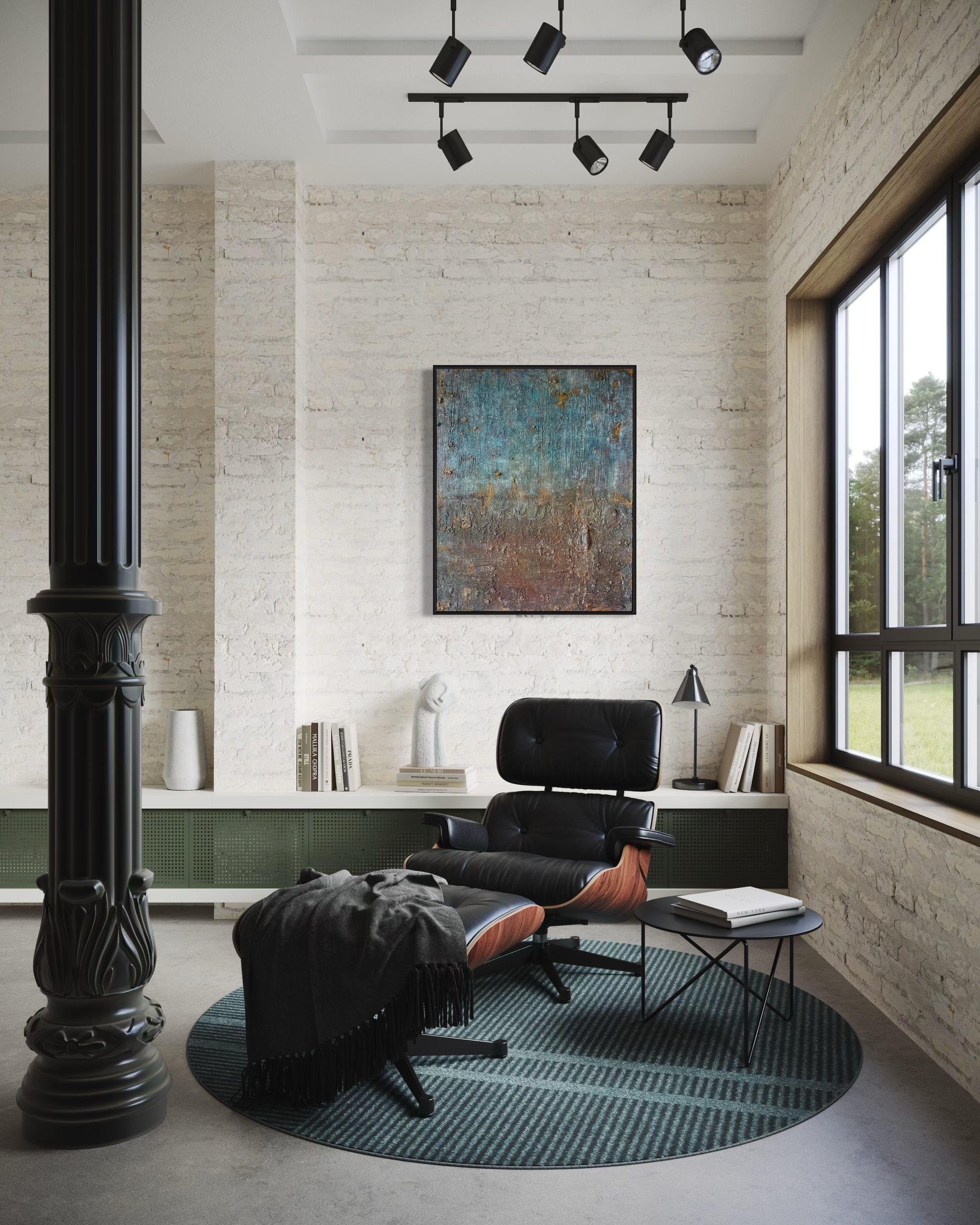
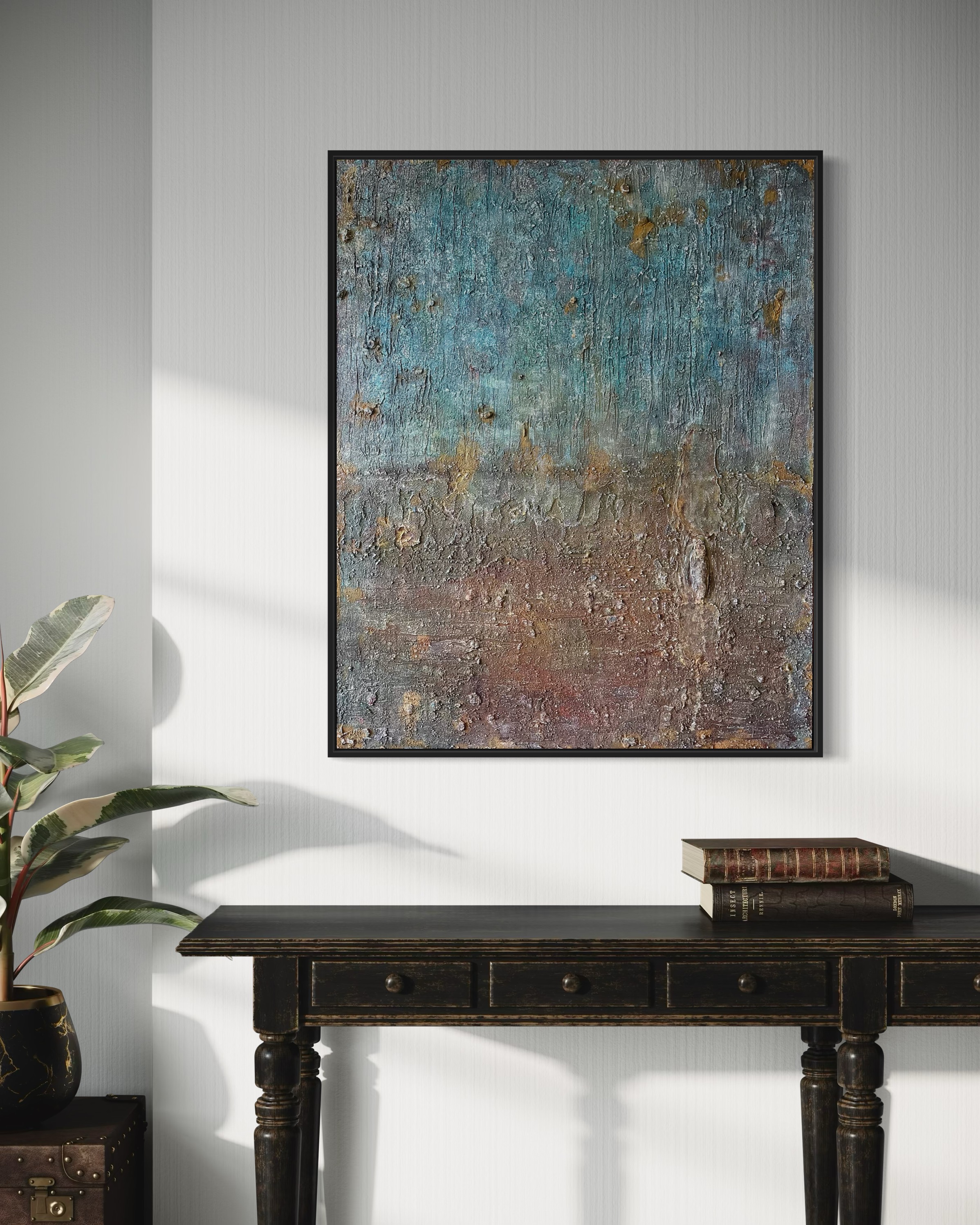
형식 비평 (Formal Criticism)
마테리얼리즘과 숭고의 변증법
이 작품은 클레멘트 그린버그의 모더니스트 평면성 이론을 전복시키면서 동시에 물질성(materiality)을 통한 숭고의 경험을 추구한다. 팔림프세스트적 화면 구성은 줄리아 크리스테바의 '아브젝션(abjection)' 미학을 구현하며, 스크래핑과 임파스토 기법의 교대는 들뢰즈-가타리의 '기관 없는 몸' 개념과 공명한다.
청록계열에서 번트 시에나로의 크로마틱 리덕션은 알베르토 부리의 'Cretto' 연작과 계보학적 연관성을 보여준다. 상부의 베르디그리 톤은 시간의 물리화학적 작용을 암시하며, 벤야민의 '아우라' 개념과 연계된다. 화면 중하단의 수직적 모티프는 아포파틱 신학적 접근을 통해 아니시 카푸어의 공허(void) 개념에 근접한다.
내용 비평 (Content Criticism)
죄의식과 구원의 이중 구조
'참회'라는 제목이 시사하는 바와 같이, 이 작품은 기독교 신학의 핵심 개념인 회개(repentance)와 속죄(atonement)를 현대적으로 재해석한다. 화면 상단의 청록색 영역은 초월적 영역, 즉 하나님의 자비와 용서를 상징하는 반면, 하단의 어두운 대지색은 인간의 죄성과 한계를 나타낸다.
중앙의 흰색 수직 형태는 중보자적 역할을 수행한다. 이는 십자가의 상징성과 동시에 기도하는 인간의 자세를 암시하며, 칼 바르트의 변증법적 신학에서 말하는 '하나님과 인간 사이의 무한한 질적 차이'를 시각화한다.
거칠고 상처 난 표면은 인간 조건(human condition)의 파편화와 소외를 드러내며, 키르케고르의 '불안' 개념이나 틸리히의 '존재의 용기'와 맥을 같이 한다. 이는 단순히 개인적 죄의식을 넘어서 현대 사회의 구조적 죄악과 집단적 상처를 포괄한다.
내러티브 비평 (Narrative Criticism)
시간성과 구원사의 압축
이 작품은 선형적 서사 구조를 거부하고 압축된 시공간 안에 구원사(salvation history) 전체를 담아낸다. 화면의 물리적 층위는 시간의 지질학적 축적을 나타내며, 각각의 스크래치와 균열은 개별적 사건들의 흔적이자 집단적 기억의 침전물이다.
상부에서 하부로의 색채 변화는 창세기의 창조 서사부터 묵시록의 종말론까지, 성경적 시간관의 수직적 구조를 반영한다. 그러나 이는 일방향적 진행이 아닌 순환적이고 반복적인 시간성을 제시한다. 월터 벤야민의 '역사의 천사' 개념처럼, 과거와 현재, 미래가 한 순간에 응축된다.
중앙의 수직적 형태는 내러티브의 정점(climax)이자 전환점(peripeteia)으로 기능한다. 이는 개인의 회심 체험을 넘어서 인류 전체의 구원 서사에서 그리스도 사건이 갖는 의미를 함축한다. 아우구스티누스의 『고백록』에서 보이는 자전적 서사와 신학적 성찰의 결합과 유사한 구조를 보여준다.
포스트모던 조건에서의 종교적 서사
이 작품은 라이오타르가 지적한 '거대 서사의 종언' 이후, 종교적 내러티브가 어떻게 생존하고 변화하는지를 보여준다. 전통적인 도상학적 재현을 포기하고 추상적 언어로 번역함으로써, 세속화된 현대 사회에서도 유효한 영성의 언어를 모색한다.
Kim Jun-sung, "Penance" - Comprehensive Art Criticism
Formal Criticism
Dialectics of Materialism and the Sublime
This work subverts Clement Greenberg's modernist theory of flatness while pursuing an experience of the sublime through materiality. The palimpsestic composition embodies Julia Kristeva's aesthetics of abjection, and the alternation between scraping and impasto techniques resonates with Deleuze and Guattari's concept of the "Body without Organs."
The chromatic reduction from teal to burnt sienna demonstrates genealogical connections to Alberto Burri's "Cretto" series. The verdigris tone in the upper section suggests the physicochemical action of time, linking to Benjamin's concept of "aura." The vertical motif in the lower center approaches Anish Kapoor's concept of void through apophatic theological methodology.
Content Criticism
Dual Structure of Guilt and Salvation
As the title "Penance" suggests, this work offers a contemporary reinterpretation of the core Christian theological concepts of repentance and atonement. The teal area in the upper section symbolizes the transcendent realm—God's mercy and forgiveness—while the dark earth tones below represent human sinfulness and limitation.
The central white vertical form performs a mediatorial role, suggesting both the symbolism of the cross and the posture of prayer, visualizing what Karl Barth's dialectical theology calls the "infinite qualitative difference between God and humanity."
The rough, wounded surface reveals the fragmentation and alienation of the human condition, aligning with Kierkegaard's concept of "anxiety" or Tillich's "courage to be." This encompasses not merely personal guilt but structural evil and collective trauma in contemporary society.
Narrative Criticism
Temporality and Compression of Salvation History
This work rejects linear narrative structure, compressing the entirety of salvation history within a condensed spatiotemporal framework. The physical stratification represents geological accumulation of time, with each scratch and crack serving as traces of individual events and sediments of collective memory.
The chromatic transition from top to bottom reflects the vertical structure of biblical temporality—from Genesis creation narrative to Revelation's eschatology. However, this presents cyclical and repetitive temporality rather than unidirectional progression. Like Walter Benjamin's "Angel of History," past, present, and future converge in a single moment.
The central vertical form functions as both narrative climax and peripeteia, embodying not merely personal conversion experience but the meaning of the Christ event in humanity's salvation narrative. This shows a structure similar to Augustine's "Confessions," combining autobiographical narrative with theological reflection.
Religious Narrative in Postmodern Condition
This work demonstrates how religious narrative survives and transforms after what Lyotard identified as the "end of grand narratives." By abandoning traditional iconographic representation and translating into abstract language, it seeks a language of spirituality that remains viable even in secularized contemporary society.
'Art > Acrylic P. Abstract' 카테고리의 다른 글
| Freedom that cannot be suppressed (0) | 2025.01.11 |
|---|---|
| Arrest (0) | 2025.01.10 |
| Save Christmas in this country (0) | 2024.12.25 |
| Answer to Yoon Seok-yeol's martial law declaration (0) | 2024.12.17 |
| We can't stand it anymore (0) | 2024.11.29 |